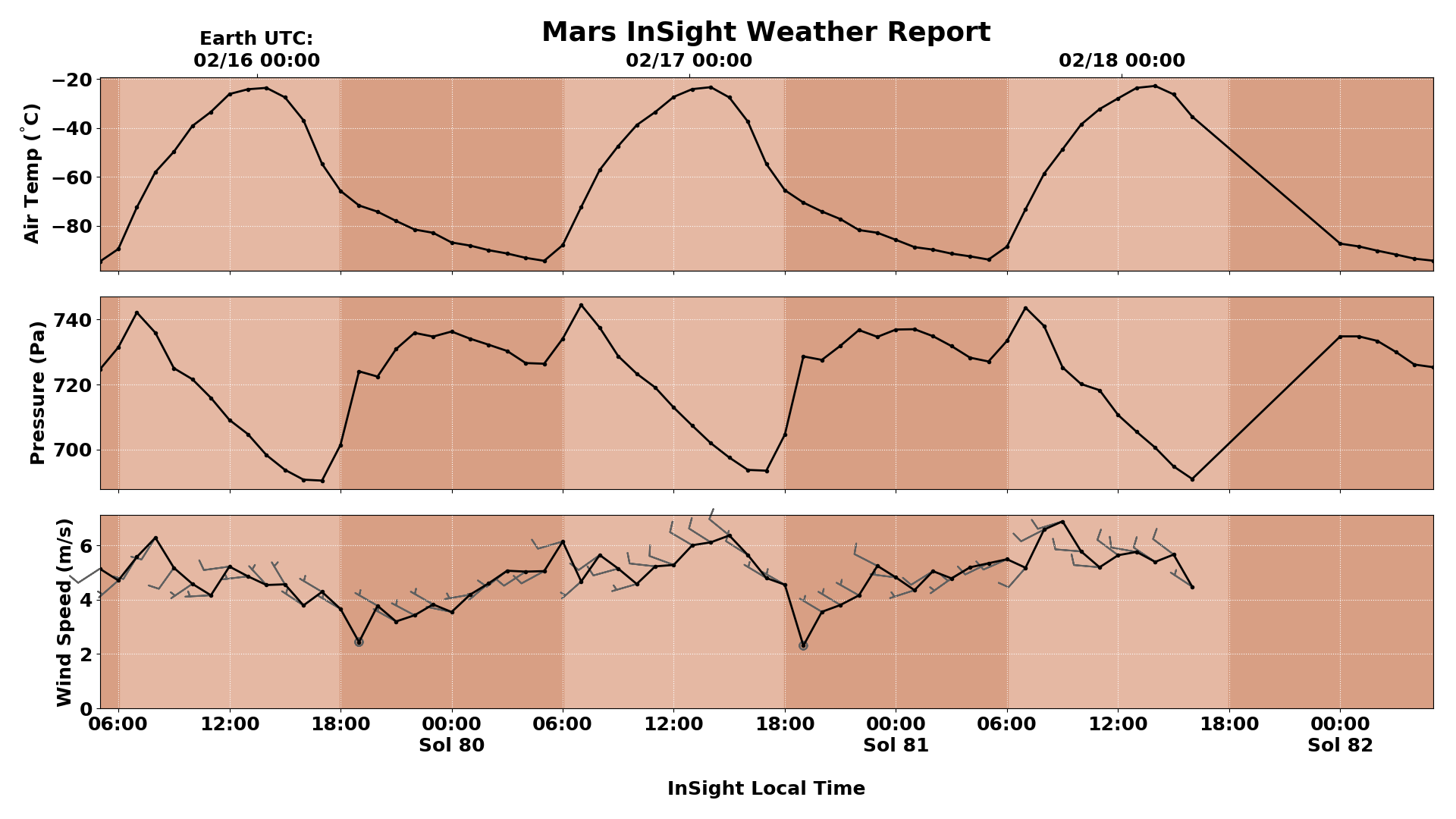
Martian hourly weather data for Saturday, Sunday, and Monday. Note the kinks in the air pressure curve at 07:00 and 19:00 daily.
There’s a new meteorologist on Mars. Although NASA’s InSight spacecraft landed on the red planet late in 2018 to measure the planet’s geology—primarily by listening for Mars quakes—it also brought some sophisticated meteorology equipment with it.
The space agency has set up a website to share that information, which includes not only daily high and low temperatures but also unprecedented hourly data on wind speed, direction, and air pressure for InSight’s location near the equator in Elysium Planitia. “We thought it was something that people might have some fun with,” Cornell University’s Don Banfield, who leads InSight’s weather science, told Ars.
Other spacecraft have brought comparable temperature and wind sensors to Mars before, but none have carried such a precise air pressure sensor. The new sensor is 10 times more sensitive than any previous instrument because InSight needs to detect slight movements in the Martian ground, and from such movements infer details about the red planet’s interior. For this, weather matters.
The Martian atmosphere may be very thin—typically it varies between 700 and 740 pascals at the surface, less than one percent of Earth’s surface pressure—but it nonetheless can induce slight tilts in the Martian surface. The air pressure sensor will therefore help scientists calibrate the lander’s seismometer so that any tilting due to higher or lower air pressure can be filtered out of the data. It’s actually pretty amazing that even so thin an atmosphere can have a slight effect on the Martian surface and that InSight’s seismometer is sensitive enough to detect it.

